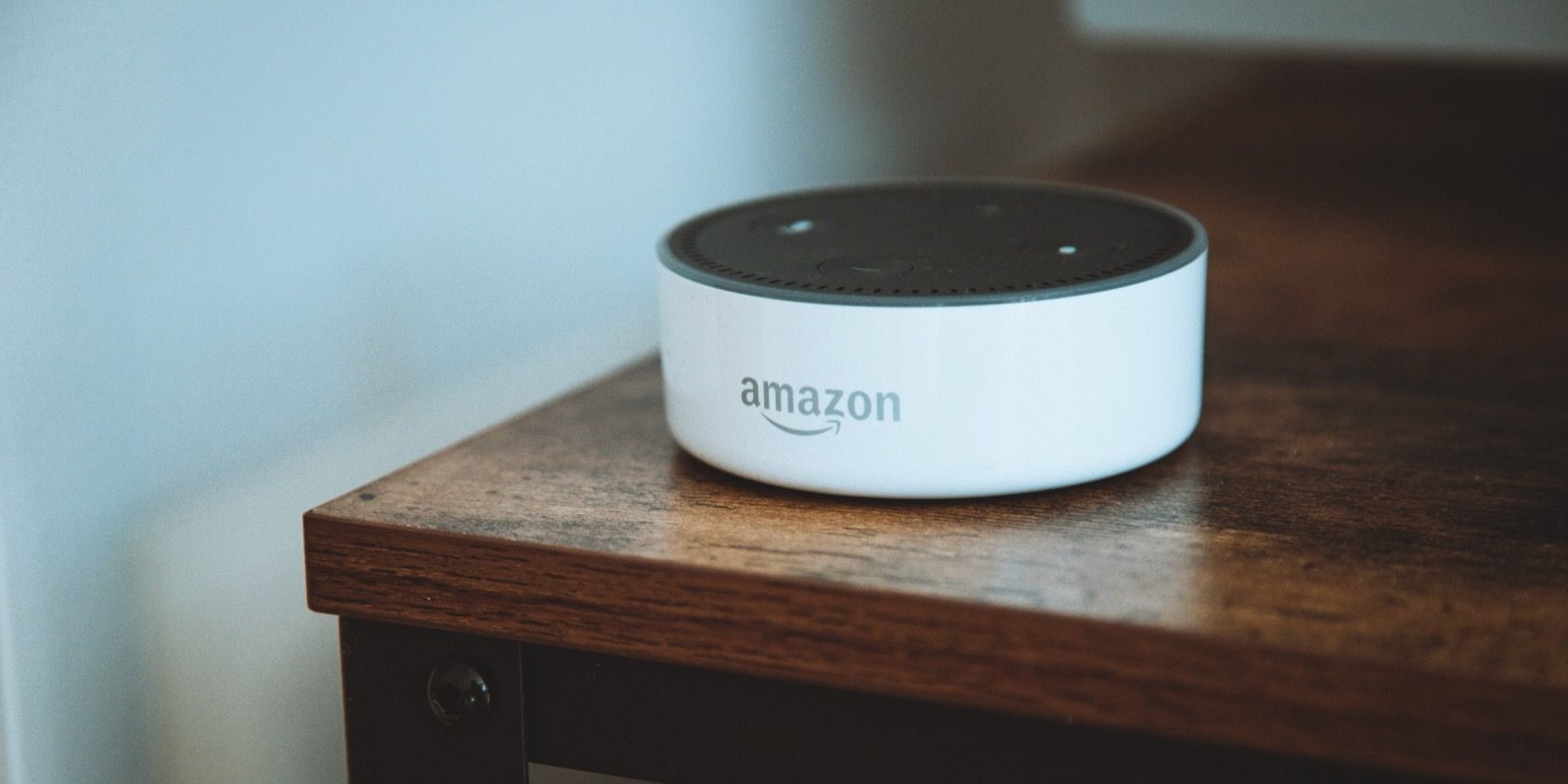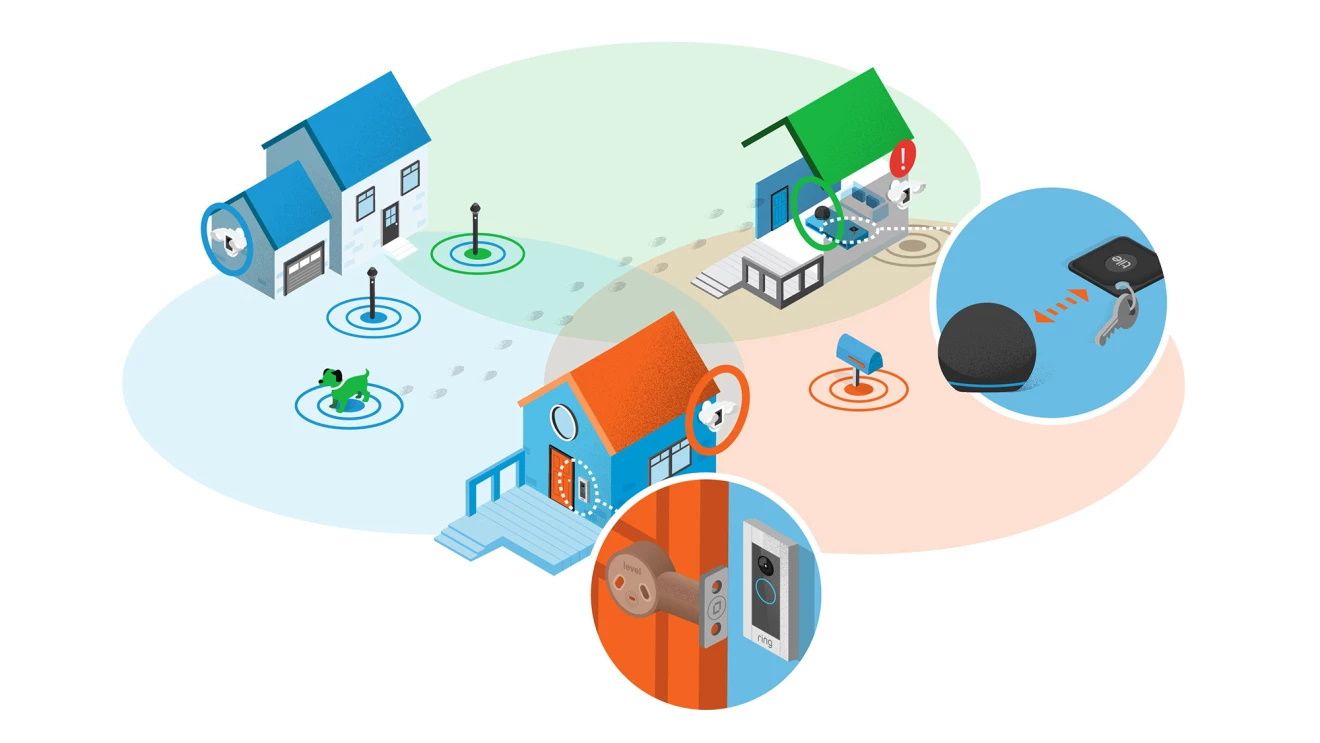Apple's ecosystem proves that there is something about technology and devices that integrates neatly into our world and makes it easy to build habits around them. The name of the game is reducing friction. The fewer steps a user needs to complete an action, the smoother it feels—and this is true for everything from smartphones to smart homes.
It's easy to imagine how making smart devices limited by arbitrary things like Wi-Fi range could negatively impact how useful a device seems. Amazon Sidewalk proposes a solution to the limitations of traditional smart home and IoT devices, but at what cost, and how does it work?
What is Amazon Sidewalk?
In short, Amazon Sidewalk is a mesh network that increases the range of low-powered connected devices—Ring devices, Echo Assistants, Tile trackers, and the like—without significantly impacting battery life or network usage by letting information hop from one device to another as it reaches its destination. Compatible devices connect using a small amount of bandwidth and allow basic functionality to extend beyond the range limits of your home Wi-Fi network.
The service helps compatible devices maintain basic functionality while not in Wi-Fi range, letting users track Tiles, adjust smart home configurations, and receive updates from devices like Ring cameras and motion trackers.
Since Sidewalk is an ambitious undertaking that leans heavily on the distribution of the network—the more people participating in the network, the more reliable the network is—compatible devices and accounts are automatically opted-in so that the network has as many nodes as possible, with the option to manually opt-out of the service. When Sidewalk launched, Amazon issued an OTA update to older Sidewalk-compatible devices, which enabled the feature and automatically added the updated devices to the Sidewalk network.
Amazon Sidewalk is only available for US-based Amazon customers who have Sidewalk-compatible devices.
How does Amazon Sidewalk work?
Sidewalk uses Bluetooth LE and 900 MHz LoRa technology to extend the range for compatible devices outside the home network they are connected to. Sidewalk-enabled devices, like Tile trackers, act only as clients, receiving the signal and benefiting from the extended range without rebroadcasting it to nearby devices. Other devices, known as Sidewalk Bridges, act as relay or transmission stations, sharing their connections to nearby devices to build the network. Sidewalk Bridge devices must be connected to a Wi-Fi network to share that connection with nearby Sidewalk-enabled devices.
Overall, the impact of Amazon Sidewalk is fairly conservative, with Amazon stating that the maximum bandwidth of the connection on any one Sidewalk Bridge device comes in at around 80 Kbps and the data usage topping out at 500 MB per month per account. The 80 Kbps bandwidth limit on Sidewalk Bridges means that unless your internet connection is almost unusable or you have dozens of Bridges on your network, you shouldn't notice any impact on your Wi-Fi network speed. However, interference on the Wi-Fi network will increase as you add more devices.
Can you disable Amazon Sidewalk?
If you own devices that are compatible with Sidewalk, and you're just not convinced by Amazon's pledge to protect your privacy or the extra 500 MB monthly data is usage you can't afford to lose, you can disable Amazon Sidewalk with the Amazon Alexa app by following these steps:
- On the Alexa Home page, tap More towards the right of the navigation bar at the bottom of the screen.
- On the More page, tap Settings.
- Next, tap Account settings to show your Amazon account options.
- On the following page, tap Amazon Sidewalk.
-
In the Amazon Sidewalk options, uncheck the Enabled toggle to opt out of the service.
Opting out of Amazon Sidewalk means losing the extended range and other benefits on compatible devices. It also means that your Sidewalk Bridges will no longer share your Wi-Fi connection with other nearby Sidewalk-compatible devices, limiting any potential privacy risks associated with the service.
Who can use Amazon Sidewalk?
Amazon Sidewalk is available to all users who have Sidewalk-compatible devices. Check the device's details to know if it supports Sidewalk; the list includes a wide range of Echo devices, Ring cameras, outdoor lights and motion sensors, and Tile trackers at no extra cost, and compatible devices are automatically opted in. To access Sidewalk, you do not need to own a Sidewalk Bridge, although if there are no other Bridges nearby your Sidewalk-compatible devices, you won't have access to the service. If you're trying to expand your smart home infrastructure, you might want to hold out and see have a look at what's available during Prime Day.
Is Amazon Sidewalk secure?
Security is at the front of many users' minds, especially considering Amazon's imperfect history of privacy violations. In the name of brevity, we'll cover the basics of privacy and security, but if you're interested in the nitty-gritty, Amazon released a white paper detailing the security and privacy protocols in use on the Sidewalk network. Most importantly, the Sidewalk connection is encrypted, meaning Amazon claims that no identifiable metadata is exposed to devices on the Sidewalk network.
However, there is some useful information that the network must have to work correctly—similar to the functional cookies many websites do not allow you to disable. There is no way for Bridges or Sidewalk-enabled devices to know they are connected. If your neighbor's Tile is connected through your Echo device, neither you nor your neighbor will know about the shared connection or where the other device is located.
The metadata Sidewalk requires is anonymous. Sidewalk refreshes and deletes network identifiers every 30 minutes to minimize the risk of someone tracing your connection through the chain of IDs on the network. Sidewalk knows the device's network identifiers and when the information is sent on the network to perform compatibility checks. It ensures appropriate data routing and that the information packet's size doesn't violate bandwidth limitations. Plus, the application server makes sure that the information gets sent to the correct cloud-based service.
Any packets sent over the Sidewalk network are encrypted, adding another layer of security to the network and the devices on it.
Mesh networks and IoT are the future
Whether you're on board or not, the interconnected future will continue to march ever forward. New technologies and protocols will continue to pop up as companies develop their ecosystems to get you to buy into their system rather than the next one.
It's important to evaluate each system on its merits to determine if it's even worth consideration. If you're just getting into the smart home space, you can start by looking at the best beginner smart home devices, or if you're looking for a little more than a smart speaker, maybe you should consider a Google Assistant smart display instead.



